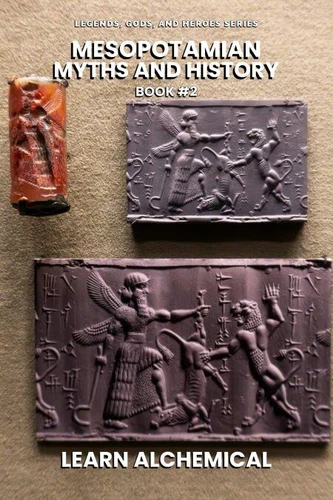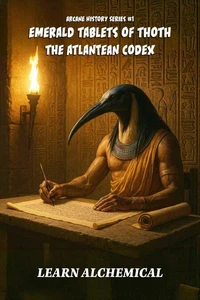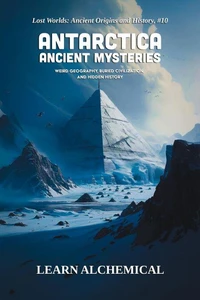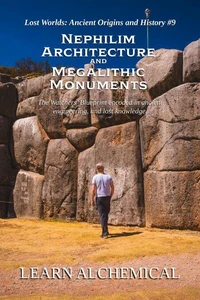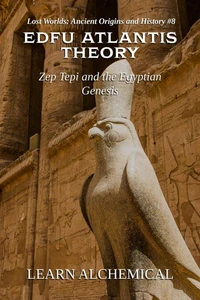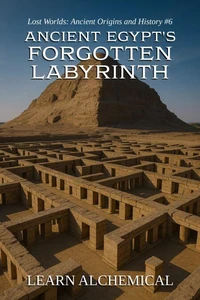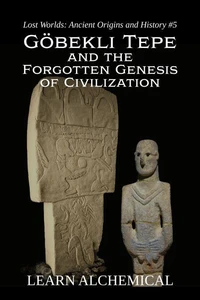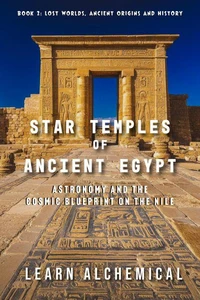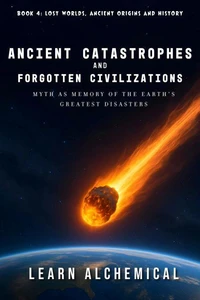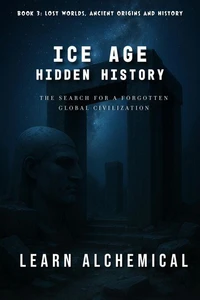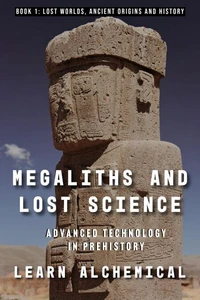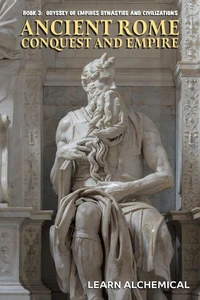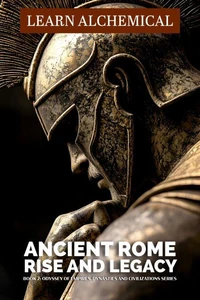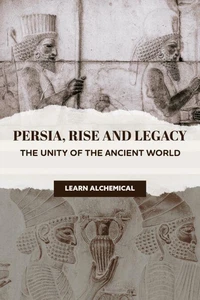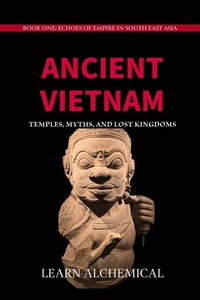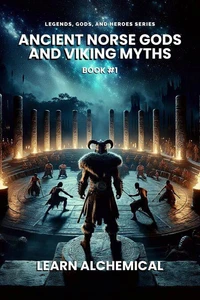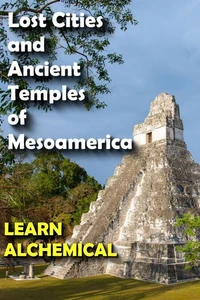Mesopotamian Myths and History. Legends, Gods, and Heroes, #2
Par :Formats :
Disponible dans votre compte client Decitre ou Furet du Nord dès validation de votre commande. Le format ePub est :
- Compatible avec une lecture sur My Vivlio (smartphone, tablette, ordinateur)
- Compatible avec une lecture sur liseuses Vivlio
- Pour les liseuses autres que Vivlio, vous devez utiliser le logiciel Adobe Digital Edition. Non compatible avec la lecture sur les liseuses Kindle, Remarkable et Sony
 , qui est-ce ?
, qui est-ce ?Notre partenaire de plateforme de lecture numérique où vous retrouverez l'ensemble de vos ebooks gratuitement
Pour en savoir plus sur nos ebooks, consultez notre aide en ligne ici
- FormatePub
- ISBN8230104971
- EAN9798230104971
- Date de parution30/12/2024
- Protection num.pas de protection
- Infos supplémentairesepub
- ÉditeurIndependently Published
Résumé
Among the numerous remarkable accomplishments of the current century, none is more extraordinary than the restoration and interpretation of the artifacts from ancient Nineveh. For generations, the colossal oppressive city lay dormant, entombed beneath the remnants of its decay, its history obscured, and its location forgotten. During the classical period of Greek and Roman literature, Ninos, or Nineveh, emerged as a legendary figure, inspiring peculiar myths and legendary triumphs that extended from the Mediterranean to India.
Limited knowledge exists regarding the history of the formidable Assyrian Empire, primarily derived from the Old Testament; that knowledge is fraught with uncertainty and ambiguity. Scholars authored comprehensive treatises to reconcile the assertions of Greek historians with Scripture; however, their endeavors ultimately led to the formulation of theories that later writers refuted and dismantled.
No one dared to propose that the history and existence of Assyria remained buried underground, ready to emerge and reveal their secrets at the touch of a wizard's wand. The discerning wisdom elucidated and interpreted the discoveries made by the rod, which functioned as the spade. Individuals may have thought that Assyria's cuneiform inscriptions, characterized by their wedge-shaped form, would remain inscrutable.
The language went unrecognized, and the significance of the numerous characters remained obscured. No bilingual text assisted the decipherer, akin to the Rosetta Stone, whose Greek inscription provided the key to understanding Egyptian hieroglyphics. Nevertheless, we realized a significant achievement. We progressively interpreted the significance of the cuneiform symbols and the words they concealed, allowing us to translate a standard Assyrian text with the same ease and confidence as a passage from the Old Testament.
The revelation that awaited the decipherer was exceedingly startling. The remnants of Nineveh produced not only stone sculptures and inscriptions but also an entire library of texts.
Limited knowledge exists regarding the history of the formidable Assyrian Empire, primarily derived from the Old Testament; that knowledge is fraught with uncertainty and ambiguity. Scholars authored comprehensive treatises to reconcile the assertions of Greek historians with Scripture; however, their endeavors ultimately led to the formulation of theories that later writers refuted and dismantled.
No one dared to propose that the history and existence of Assyria remained buried underground, ready to emerge and reveal their secrets at the touch of a wizard's wand. The discerning wisdom elucidated and interpreted the discoveries made by the rod, which functioned as the spade. Individuals may have thought that Assyria's cuneiform inscriptions, characterized by their wedge-shaped form, would remain inscrutable.
The language went unrecognized, and the significance of the numerous characters remained obscured. No bilingual text assisted the decipherer, akin to the Rosetta Stone, whose Greek inscription provided the key to understanding Egyptian hieroglyphics. Nevertheless, we realized a significant achievement. We progressively interpreted the significance of the cuneiform symbols and the words they concealed, allowing us to translate a standard Assyrian text with the same ease and confidence as a passage from the Old Testament.
The revelation that awaited the decipherer was exceedingly startling. The remnants of Nineveh produced not only stone sculptures and inscriptions but also an entire library of texts.
Among the numerous remarkable accomplishments of the current century, none is more extraordinary than the restoration and interpretation of the artifacts from ancient Nineveh. For generations, the colossal oppressive city lay dormant, entombed beneath the remnants of its decay, its history obscured, and its location forgotten. During the classical period of Greek and Roman literature, Ninos, or Nineveh, emerged as a legendary figure, inspiring peculiar myths and legendary triumphs that extended from the Mediterranean to India.
Limited knowledge exists regarding the history of the formidable Assyrian Empire, primarily derived from the Old Testament; that knowledge is fraught with uncertainty and ambiguity. Scholars authored comprehensive treatises to reconcile the assertions of Greek historians with Scripture; however, their endeavors ultimately led to the formulation of theories that later writers refuted and dismantled.
No one dared to propose that the history and existence of Assyria remained buried underground, ready to emerge and reveal their secrets at the touch of a wizard's wand. The discerning wisdom elucidated and interpreted the discoveries made by the rod, which functioned as the spade. Individuals may have thought that Assyria's cuneiform inscriptions, characterized by their wedge-shaped form, would remain inscrutable.
The language went unrecognized, and the significance of the numerous characters remained obscured. No bilingual text assisted the decipherer, akin to the Rosetta Stone, whose Greek inscription provided the key to understanding Egyptian hieroglyphics. Nevertheless, we realized a significant achievement. We progressively interpreted the significance of the cuneiform symbols and the words they concealed, allowing us to translate a standard Assyrian text with the same ease and confidence as a passage from the Old Testament.
The revelation that awaited the decipherer was exceedingly startling. The remnants of Nineveh produced not only stone sculptures and inscriptions but also an entire library of texts.
Limited knowledge exists regarding the history of the formidable Assyrian Empire, primarily derived from the Old Testament; that knowledge is fraught with uncertainty and ambiguity. Scholars authored comprehensive treatises to reconcile the assertions of Greek historians with Scripture; however, their endeavors ultimately led to the formulation of theories that later writers refuted and dismantled.
No one dared to propose that the history and existence of Assyria remained buried underground, ready to emerge and reveal their secrets at the touch of a wizard's wand. The discerning wisdom elucidated and interpreted the discoveries made by the rod, which functioned as the spade. Individuals may have thought that Assyria's cuneiform inscriptions, characterized by their wedge-shaped form, would remain inscrutable.
The language went unrecognized, and the significance of the numerous characters remained obscured. No bilingual text assisted the decipherer, akin to the Rosetta Stone, whose Greek inscription provided the key to understanding Egyptian hieroglyphics. Nevertheless, we realized a significant achievement. We progressively interpreted the significance of the cuneiform symbols and the words they concealed, allowing us to translate a standard Assyrian text with the same ease and confidence as a passage from the Old Testament.
The revelation that awaited the decipherer was exceedingly startling. The remnants of Nineveh produced not only stone sculptures and inscriptions but also an entire library of texts.

